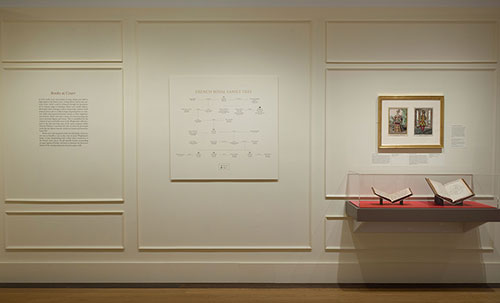As both works of art and symbols of status, books were held in high regard at the French court. A large library had its own cultural cachet, which could beenhanced through the decoration of its volumes’ pages or bindings. Books were mobile objects, allowing for their exchange as tokens of patronage. Authors could dedicate their work to a noble in hopes of gaining favor at court, and nobles often presented bound volumes to their supporters and retainers. Books were also a means of commemorating the court’s principal figures and events. This is exemplified by the volumes of opera and ballet scores in the Wrightsman collection, such as the sole surviving copy of the court composer André Danican Philidor’s La princesse de Crète, as well as by devotional works like the Hymne nouvelle, which was written and bound for Louis XIV.
Books were well integrated within the full display of decorative arts at Versailles—just as they were in Jayne Wrightsman’s home. In fact, bookbinding had a rather direct connection to the French court’s decor: the gilt dentelle borders surrounding an open expanse of leather mirrored in miniature the decorative frames of the wood paneling that lined the palace walls.

